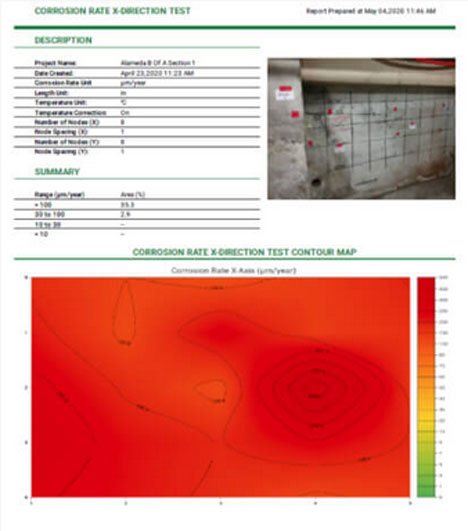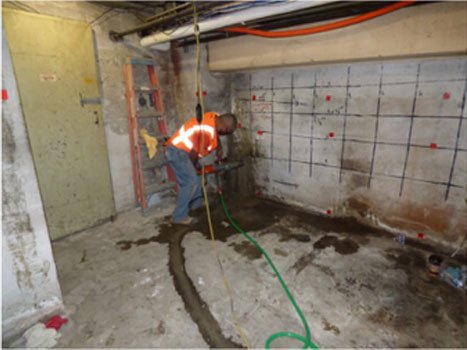NON DESTRUCTIVE CORROSION TESTING
Bank of America

An historical bank building in Alameda, California was experiencing an exorbitant amount of corrosion and concrete failure, in their basement. The cause was high water fluctuation due to tidal flow and close proximity to the bay. The briny water increased the corrosion rate of both the steel, and the concrete, causing concern for the structural integrity of the building.
The building was constructed in 1910, without considerations for corrosion protection of the embedded rebar and structural steel.
Foundation Technology was contracted to perform suggested repairs based on visual inspections, and prior geology reports.
Instead of cursory repairs, we suggested a thorough damage investigation that included non destructive corrosion mapping and predictability inspections, chloride testing, and concrete compression strength tests.
The key outcomes of the inspection and testing were to determine integrity of all structural elements of the building, discover probable water intrusion channels, and develop a comprehensive long term rehabilitation and maintenance plan.
Inspection and testing were conducted over a week, afterhours to enable continued operation of the bank.
Due to high water level, visual inspection of the column and footings was suggested by the attending structural engineer, which required exposing footing pads at the basement level.
ICOR corrosion mapping was performed on all the basement walls, column, and beams. Ground penetrating radar was used to map the embedded rebar and steel column beams, as well as detect any voids under the floors and perimeter walls.
Four core samples were taken at locations determined by excessive rust and effervescence staining, to later be sent to testing laboratories for chloride, moisture analysis, hardness and composition.not only prolong the life of the concrete, but also guard against the effects of excess wear, and mother nature.
Results
Through detailed inspection, and analysis of the data, Foundation Technology was able to determine the corrosion and damage was much more extensive than originally expected.
Water had corroded the column I-beams in all the below grade footings, and the perimeter walls were found to be in much need of rehabilitation.
Core samples proved the strength of the concrete was less than optimal in many perimeter walls, and GPR scanning provided multiple voids which could result in collapse.
A detailed emergency repair plan, combined with a multi-step rehabilitation proposal, including engineering and historical architectural committee that satisfied the city’s permit requirements, was provided within sixty days, after completion of the laboratory test results.
Foundation Technology is completing the emergency repairs in the fall of 2020, and will begin the rehabilitation in phases, starting in 2021. Through our efforts, we were able to divert a potential catastrophic loss to an important historical structure.






